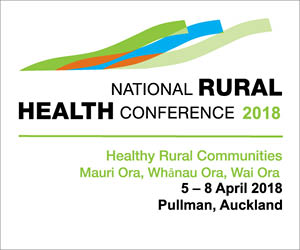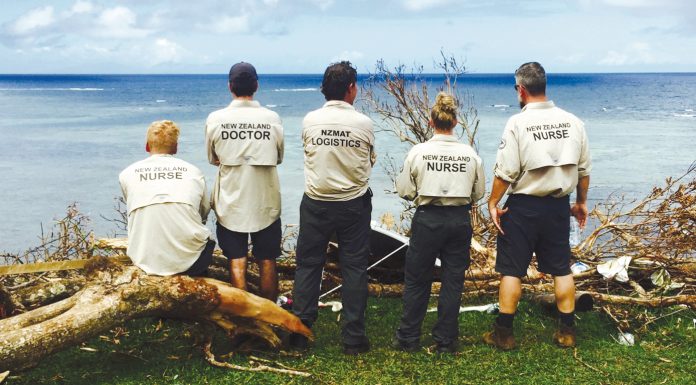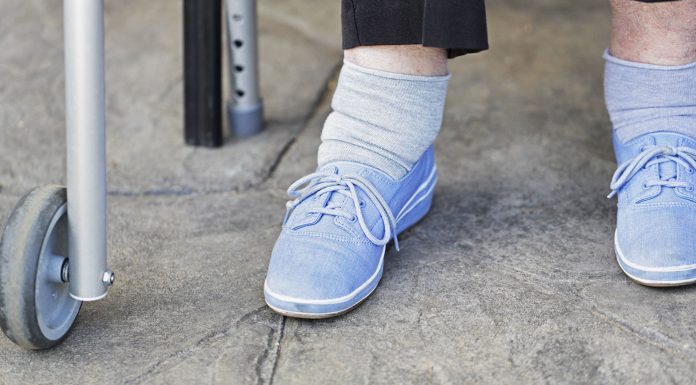The rumblings are growing. No nurse begrudges caregivers getting a decent wage for their hard and skilled work, but many in the sector are reporting that nurses are hurting at seeing the pay gap shrink – and in some cases disappear – between themselves and their unregulated colleagues working in residential aged care.
From 1 July an experienced healthcare assistant (HCA) could earn $23.50 an hour – about the same or more than the experienced enrolled nurse (EN) or new graduate registered nurse (RN) under whom they might be working. By 2021 that same HCA will be earning $27 an hour – similar to or more than what many RNs in the aged care sector currently earn (see table).
The $2 billion settlement of the recent landmark Kristine Bartlett vs TerraNova equal pay case includes no provision for retaining pay relativity between the regulated nursing workforce and the unregulated workforce for whom they are responsible, and leaves nurses and employers wondering what happens next. They are also wondering, if pay relativity is not restored, what the cost might be to nursing morale and turnover in a sector where nurses’ take-home pay is on average 23 per cent lower than their colleagues in public hospitals.
There is no dispute that those quoted below are supportive of pay equity for care workers. None dispute the justice of the equal pay case or begrudge better pay for hard-working, skilled HCAs; in fact, all stress their support. But many have questions about the flow-on effect of the $2 billion settlement, which was announced in mid-April after nearly two years of negotiations between the unions, employers and the government, on an already strained aged residential care (ARC) sector.
This speculation includes the possible perverse effects that the new caregiver pay rates may have on both staffing numbers and the skill mix of people caring for aged care residents, and how it will influence nurse recruitment and retention, coming as it has on top of the uncertainty created for the sector’s migrant workforce by recent immigration law changes.
A worried sector
Nurses are the clinical ‘backstop’ of rest home and hospital care and you can’t have a caregiver and an RN on the same wage, says Victoria Brown, a director of Care Association of New Zealand (CANZ) that represents about 110 small and medium providers. “If anything goes wrong it’s the RN who really carries the can for it.”
But Brown says the settlement’s funding formula created winners and losers, with small owner-operators and trust-run hospitals some of the hardest hit and many predicting significant shortfalls in meeting the new legislated caregiver pay rates.
Some are talking redundancies, others possible closure.
One of those members feeling stretched to his limits is Rob Winstanley, a nurse who, with his nurse wife Chamaiporn Winstanley, owns and operates a 30-bed rest home, and says that by the end of the year his qualified caregivers will be earning more than himself. He says he is obliged to give a pay rise to the one RN on his payroll, but the cost of the settlement is going to be so “brutal” that he is considering caregiver redundancies. “We’ve been actively encouraged by the government to train our staff, which we have done, but now that we have a fully qualified group of caregivers we are going to be absolutely hammered by the new pay rise.”
Enrolled Nurse Section chair Leonie Metcalfe acknowledges that it won’t be an easy time for some facilities but says that pay rates and pay relativity between regulated nurses and unregulated HCAs need to be addressed “ASAP”.
Otherwise, her aged care members are telling her, tensions will build in workplaces and there is a strong likelihood that ENs and RNs will exit aged care facilities. They are also concerned about the potential impact “on the care of some of our most vulnerable health consumers, our elderly”, says Metcalfe. “We can’t afford to have a fragmented team of healthcare workers.”
Many others in the sector echo similar concerns or comments.
Professor Jenny Carryer, executive director of the College of Nurses, says that loss of pay relativity will raise “substantive workforce challenges” that need to be carefully and quickly addressed.
Carolyn Cooper, lead nurse and clinical services improvement director for BUPA, says there is no doubt that the unions and the sector at some point will need to address what is ‘fair and reasonable’ for aged care nurses going forward.
Dr Noeline Whitehead, a long-time advocate for aged care nursing and current director of nursing at Bethesda Care, says that nurses are hurting and feeling undervalued at the loss of the pay gap between them and the staff they are legally accountable for directing and delegating. “I think we’ve got a potential crisis on our hands”.
Aged care NP Michal Boyd agrees that the knock-on effects of the settlement could raise some ‘red flags’ for the sector, including her fear that fewer staff will be employed as a result of the caregiver pay rise and leading to increasing workloads and decreasing quality of care.
Associate Professor Stephen Neville, president of the New Zealand Association of Gerontology, believes that funding the pay equity settlement long-term will be problematic and puts the smaller owner-operator facilities in particular in a “precarious position”.
Who’s going to pay?
None of these concerns and fears are new or unexpected. Simon Wallace, chief executive of the New Zealand Aged Care Association (NZACA), says it was at pains to point out during the caregiver negotiations that there would be flow-on effects for nurses in the sector. But he says it was made very clear by government officials that nurses’ pay relativity was outside the scope of the Care and Support Worker Settlement.
“The reality for our members is that they’re now dealing with an RN workforce that is feeling disempowered,” says Wallace. Employers will feel pressured to pay nurses more to retain them, but clearly some weren’t going to be paid enough to meet the legislated caregiver rates – “so that’s a really big problem”.
Nursing Review asked Health Minister Jonathan Coleman whether the Government planned to allocate new funding to meet pay relativity for aged care nurses. He did not answer that query but did say that pay relativity was “discussed extensively throughout the negotiations” and all parties acknowledged that the settlement would affect pay relativity.
But it was also agreed by all parties that the settlement would not be used as a precedent or argument for pay increases in other occupational groups. He added that legislation was being progressed to establish a pay equity process that other female-dominated occupational groups could follow.
The Ministry of Health chief nursing officer Dr Jane O’Malley says the Ministry is advising aged care providers that the impacts of relativity needs to be managed as “part of their normal business practice” and the costs dealt with as part of the normal contract negotiation process.
David Wait, aged care industrial advisor for one of the settlement parties, the
New Zealand Nurses Organisation, is keen to stress that the unprecedented pay equity deal is a moment to be celebrated before he is ready to move on to discuss the “fair issues” being raised by nurses in the sector.
“I think the onus is on providers to address the relativity immediately in the case of ENs and next year for the RNs.” He acknowledges that some providers will find it financially difficult from 1 July to pay ENs what they are worth but believes that for most it is within their means.
Quality and quantity
The Minister and Ministry believe the settlement will have a positive impact on the quality of aged residential care.
They expect the pay boost to improve standards of care by helping recruitment, lowering staff turnover and resulting in a more capable and skilled workforce through access to training and qualifications.
Others are not so confident, including Noeline Whitehead, one of the very few aged care nursing leaders with a PhD in the field. She has already lost two nurses to a public hospital this year – attracted by more money and less professional risk – and she can’t see the situation improving with the loss of pay relativity.
“Nurses in aged care work very hard – they take a huge amount of clinical accountability and they are targeted every time there is a complaint.” She is recommending to her board that her nursing staff get a pay rise in wake of the caregiver settlement, but first they have to find the money.
“Quite frankly, I feel like the meat in the sandwich – which could go rotten quite quickly.” She is worried about the impact on aged care nurse recruitment in general, but also on nurse managers in a sector already suffering from the lack of a pool of expert and experienced nurse leaders to call on.
Many in the sector also fear that wages going up could see staffing levels go down, putting yet more pressure on nurses. And there is speculation about what skill mix changes might result from the pay rate of an unregulated HCA with a Level 4 certificate becoming virtually on a par with the pay rate of a regulated EN with a Level 5 diploma or a new graduate RN with a three-year degree.
David Wait says it will be a real concern if the caregiver pay boost leads to a reduction in staffing, as “levels now are already too low to provide quality care”. He says the lack of mandatory staffing levels in the sector “heightens the risk” of some providers “squeezing” staff hours and dropping staff levels after 1 July.
Carolyn Cooper says BUPA, which employs around 500 RNs and 80 ENs and a further 115 nurses as clinical or unit managers, has no expectations of changing its skill mix because of the pay settlement, although she acknowledges that the impact might be different for smaller operators. She did challenge the EN workforce though, at this year’s Enrolled Nurse Section Conference, to see the narrowing pay gap as an opportunity to promote the advantages of employing a regulated, diploma-qualified EN over an unregulated HCA.
Hopefully more enrolled nurse positions being advertised might be a positive spin-off, agrees Leonie Metcalfe, with employers seeing that they can get an EN working to the full potential of their regulated scope for around the same cost as an HCA.
But on the other hand, she says, it might see more ENs choosing to be a caregiver as being unregulated means less responsibility and not having to meet the ongoing professional development requirements – often at their own cost and in their own time – to maintain their annual practising certificates.
It might also stop potential ENs committing to 18 months of full-time study and student loans. Nursing Review heard anecdotally about an experienced caregiver who had recently graduated as a registered nurse wondering whether she’d have bothered if she’d known then that her pay would be virtually the same.
Disruption
How the well-earned pay equity settlement will eventually impact on the nursing workforce caring for some of the country’s most vulnerable people is as yet unknown. In the short-term the fact that the pay equity settlement exposes the inequality of wages for enrolled and registered nurses in the sector is a positive, believes David Wait.
“It is going to cause some disruption within the sector, but ultimately it is going to lead to those other occupational groups also being paid fairly for what they do.”
Others are not so convinced that the sector’s nursing workforce and smaller facilities have the resilience to withstand any more disruption.
Meanwhile, the rumbles in the sector should probably not be ignored.
Table 1:
| Occupation | Hourly rate |
| Caregiver/healthcare assistant (with 12 years’ experience or Level 4 certificate) | $23.50 (1 July 2017)
$27.00 (1 July 2021) |
| EN (aged care sector) | $18–$24 |
| New graduate RN (DHB sector) | $23.77 |
| RN basic pay scale (aged care sector) | $24–$30 |






















